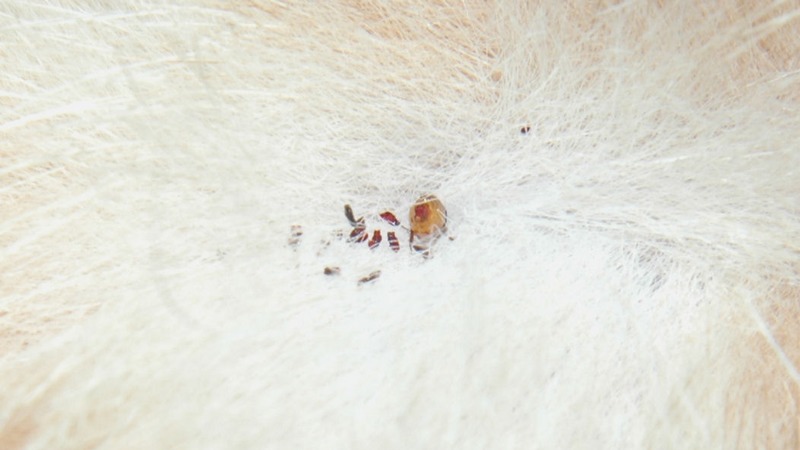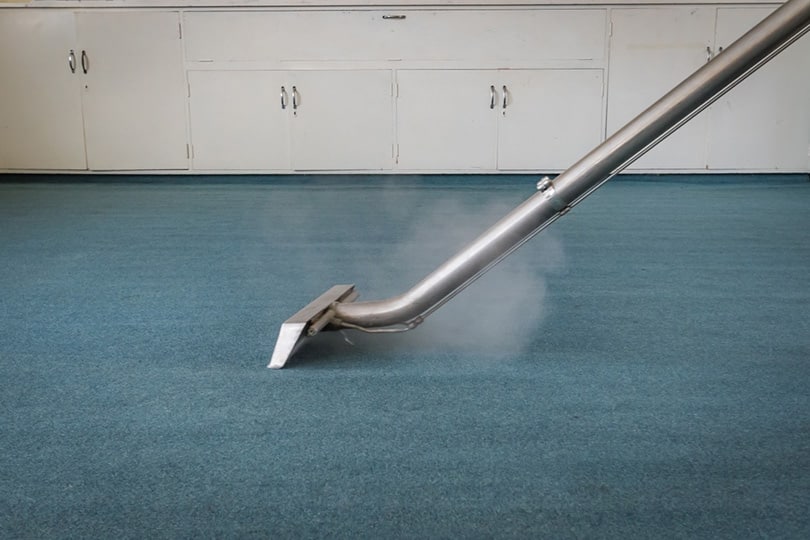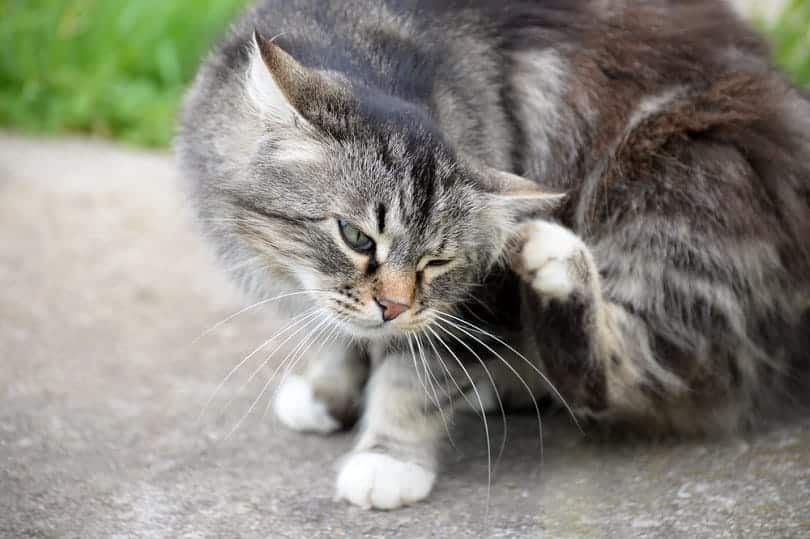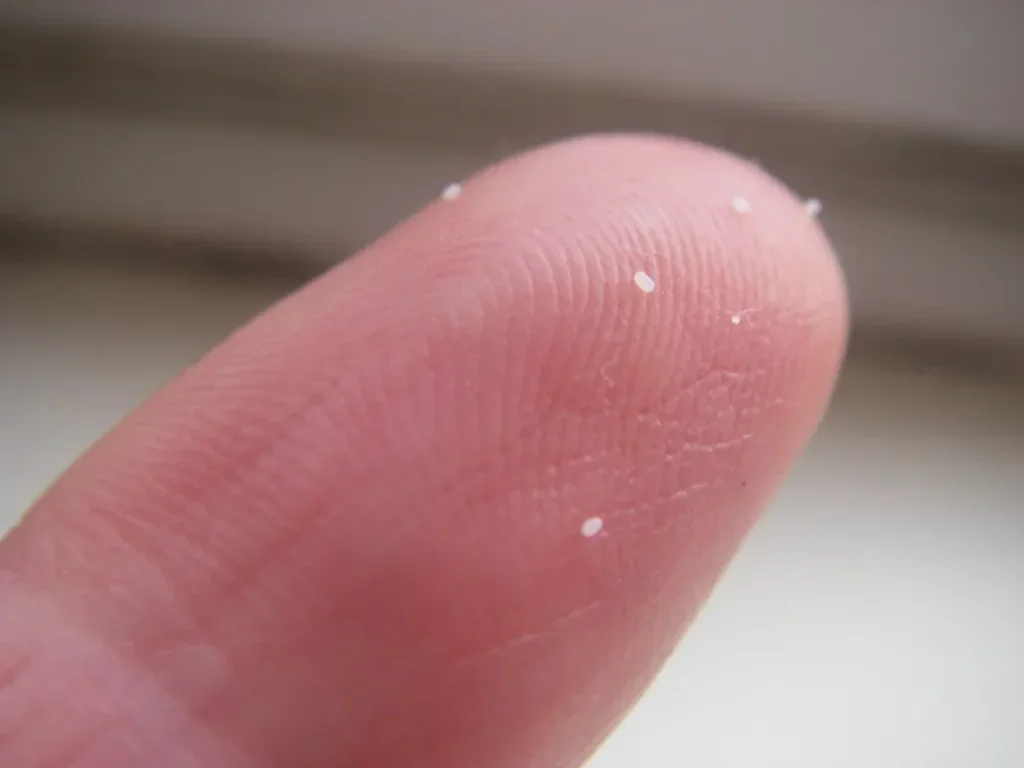You’re sitting on the couch, maybe playing with your dog or just relaxing after a long day. Suddenly, you feel a quick sting on your ankle. You look down, expecting a mosquito or an ant, but find nothing. Later, a small red bump appears and the itching begins. If you live with pets or have dealt with pest issues before, this scenario might feel familiar. It usually leads to one specific question: do fleas jump on humans?
Understanding how fleas behave, when and why they target people, and how to detect and prevent them isn’t just about knowledge — it’s about comfort, health, and peace of mind. If you’ve ever walked across your carpet barefoot and felt a mysterious bite, this guide is for you.
Understanding Flea Behavior and Movement

Why Fleas Jump Instead of Crawl or Fly
Fleas don’t crawl across your floors like ants, and they don’t hover in the air like mosquitoes. They jump. That jump is their superpower. Fleas are built with long, spring-loaded back legs that let them leap over 100 times their own body length. This jumping ability replaces the wings that most other parasites use to find a host.
Jumping is not just a random survival trait. It allows fleas to navigate between their hiding spots in the environment and potential hosts quickly. A crawling flea would never catch a moving dog or cat. A jumping flea, however, can wait silently in the fibers of a carpet and launch instantly when it senses movement or body heat.
How High and Far Fleas Can Jump
On average, a flea can jump about 7 to 13 inches vertically and around 18 inches horizontally. That might not sound like much, but for a tiny insect just a few millimeters long, it’s an incredible range. This allows them to go from the floor to your leg or from a pet’s bedding onto your couch.
These distances matter when you’re trying to figure out where they came from. If you’re being bitten on the lower legs while sitting, there’s a good chance the fleas are jumping from a nearby carpet or pet bed. This ability to cover distance in a single movement is part of what makes them so hard to detect.
Do Fleas Jump on Humans? The Short Answer
Yes, fleas do jump on humans. They don’t make a habit of living on us, but they will use us for feeding if the opportunity arises. Human skin is not their preferred environment, but it’s enough for a quick blood meal. Fleas are opportunists, and when their ideal host — usually a pet — isn’t around, they turn to the next warm body nearby.
They don’t stay long, though. After feeding, they typically jump off to return to their nesting zones. That’s why people often find flea bites but never actually see the fleas themselves.
Why Fleas Are Attracted to Warm-Blooded Hosts

Fleas are finely tuned to detect signs of life. They’re drawn to warmth, body heat, carbon dioxide, and movement. That’s why both pets and humans become targets. Even walking across a room can send enough vibration and warmth through the air to activate a flea hiding in the carpet.
Your breath, body temperature, and footsteps signal to the flea that a host is nearby. While animals offer fur and long-term shelter, humans give them a quick meal. So they jump, bite, feed, and leave.
Can Fleas Live and Reproduce on Human Skin?
No, fleas cannot live or lay eggs on human skin. Our bodies lack the dense hair and stable body temperature that fleas need for reproduction. Fleas evolved to survive on mammals with thick fur, which gives them warmth, protection, and places to hide their eggs.
Even though they can bite humans and feed on us briefly, they don’t settle in. You won’t find flea eggs on human skin or hair, and they don’t nest on clothing. Instead, they bite and retreat to the environment to continue their lifecycle.
When and Why Fleas Jump on People

Close Contact with Infested Pets
Most flea contact starts with your pet. If your cat or dog has fleas, they’re constantly shedding flea eggs, larvae, and adult fleas into your home. Fleas can jump directly from your pet onto your skin during grooming, cuddling, or playtime. This is the most direct path to getting bitten.
Even if you’re not touching your pet, fleas may jump onto you if you’re nearby. Sitting where your pet sleeps or standing next to their bed puts you at risk. Fleas don’t wait for the perfect moment — they respond to movement and heat.
Walking on Carpets, Rugs, or Bedding with Fleas
Homes with untreated fleas often have them hiding in soft surfaces. If you walk barefoot or sit on the floor, you may unknowingly become a target. Fleas are small and light, so they stay close to the base of carpet fibers. Your footsteps cause just enough vibration to make them leap.
This is a major reason why flea bites are often concentrated on ankles and lower legs. These are the closest skin surfaces to the floor, and fleas aim for what’s reachable. A quick walk across a rug can leave you with a cluster of itchy bites.
Fleas Searching for a New Host
If a pet leaves the house or dies, fleas left behind become aggressive. They need a blood meal to survive, and if the usual host is missing, they begin targeting people. This is why post-pet infestations are common, especially in homes where pest control wasn’t applied after a pet moved out.
Fleas don’t wait long. Within hours or days of losing their host, they become more active, jumping on anyone nearby. They’re resilient and can survive in empty homes for weeks, even months, waiting for a new host to arrive.
How to Tell If Fleas Are Jumping on You

Flea Bites on Ankles and Legs
The classic sign of flea activity is a small cluster of red, itchy bites on the lower legs. Unlike mosquito bites, which tend to be more spread out, flea bites often appear in rows or clusters. They are also more likely to itch immediately.
People with sensitive skin may also see swelling or hives around the bite area. In some cases, secondary infections can occur from scratching. If you’re repeatedly finding bites in the same areas, especially after being on the floor or near pets, fleas are the likely cause.
Tiny Moving Specks on Clothing
After being in an infested area, you might spot small black or brown specks on your socks or pants. These could be adult fleas. They move quickly and may hop away before you get a good look.
Another indicator is what’s called “flea dirt” — essentially flea feces that look like pepper flakes. If you rub these specks on a damp paper towel and they turn reddish-brown, it’s a sign they’ve digested blood and you’re likely dealing with fleas.
Sudden Itching After Sitting or Lying Down
Many people first notice fleas after sitting on a couch or lying in bed. If you begin itching within a few minutes of contact with furniture or bedding, especially in areas where pets rest, fleas are a likely culprit.
This reaction is often underestimated. People assume dust or fabric irritation is to blame. But if the itching is sharp and followed by small red bumps, check the area thoroughly. Fleas can hide deep in cushions and fabric seams.
Can Fleas Survive on Humans?
Why Human Skin Isn’t Ideal for Fleas
Fleas need more than just blood to survive. They need shelter, warmth, and a surface that allows them to anchor. Human skin does not meet those criteria. We’re simply not equipped to host fleas long-term.
Fur provides both insulation and a hiding place. Humans offer exposed skin, fluctuating temperatures, and the constant risk of being scratched or washed off. These factors make long-term survival on human bodies extremely unlikely for fleas.
How Long Fleas Stay Before Jumping Off
Most fleas that land on humans leave within a few minutes. They bite quickly, feed, and jump off to hide in the nearest dark area. That could be the seam of a couch, the underside of a rug, or the folds of a pet blanket.
Because they can’t reproduce on humans, staying isn’t in their interest. Their instinct is to feed and return to their nesting zone. That’s why infestations often go unnoticed until there are visible signs like bites or pets scratching excessively.
Difference Between Fleas on Humans and Other Pests
Fleas vs. Bed Bugs
Both fleas and bed bugs feed on blood, but that’s where the similarity ends. Bed bugs crawl and prefer to live in mattresses, bed frames, and furniture seams. They feed at night and leave behind dark spots and small blood stains.
Fleas, on the other hand, jump. They live in carpets and pet bedding and feed during the day or anytime they detect heat and movement. Bed bug bites are usually found on the upper body, while flea bites concentrate on legs and feet.
Fleas vs. Lice
Lice are species-specific and adapted to live on the human scalp or body. They move slowly and lay eggs directly on hair shafts. Fleas are fast and mobile. They don’t cling to human hair or skin, and they lay their eggs in the environment.
Lice infestations require close contact to spread. Fleas, however, can jump across distances and infest entire rooms. The treatment for lice involves medicated shampoos and combing. Flea infestations require environmental cleaning and pet treatment.
How to Prevent Fleas from Jumping on You
Protecting Yourself Indoors
- Wear socks and long pants if you suspect fleas in your home.
- Use diatomaceous earth or flea spray in carpets and pet zones.
Avoid sitting on pet beds or old furniture without checking for flea activity. Vacuum regularly, and use washable slipcovers when possible. Keep an eye on pets and groom them frequently to detect early signs of fleas.
Treating Pets and Their Sleeping Areas
Your pet is the first step in the flea prevention chain. Use veterinarian-approved flea treatments monthly. Wash pet bedding weekly in hot water. Fleas love dark, warm areas, and pet beds are the perfect spot.
If one pet has fleas, treat them all. This includes cats, dogs, and even indoor rabbits. Skipping treatment for just one animal can lead to reinfestation across the home.
Cleaning and Vacuuming High-Risk Zones
Vacuuming is one of the most effective ways to remove fleas, larvae, and eggs. Focus on high-traffic areas, under furniture, and where pets sleep. Empty vacuum bags immediately and seal them in a plastic bag before disposal.
Steam cleaning adds an extra layer of protection. Fleas are sensitive to heat, and high temperatures kill both adults and larvae. Repeat cleaning weekly during active infestations.
What to Do If Fleas Keep Jumping on You
Treating Bites and Itching
Clean bites with soap and water. Use over-the-counter anti-itch creams or oral antihistamines. Scratching can lead to infections, so keep nails trimmed and avoid further skin trauma.
If symptoms don’t improve or worsen, consult a healthcare provider. Recurrent bites may also indicate that the infestation is not fully under control and needs a broader treatment approach.
Eliminating the Source of Infestation
Identify the infestation source and treat it comprehensively. Fleas don’t live on people — they live in your environment. Focus on carpets, furniture, pet beds, and cracks in flooring.
Consistency is key. Flea eggs hatch in cycles, so treatment must be repeated for several weeks. Consider professional pest control if you’ve followed all steps and still notice fleas. A single missed area can lead to reinfestation.
Conclusion: Fleas Jump on Humans, But Don’t Stay
Yes, fleas can and do jump on humans, especially when pets are absent or untreated. But they don’t stay. Human bodies are not designed to support their lifestyle. Their brief presence can still cause irritation and discomfort, so prevention and early detection matter.
Understanding their behavior and knowing how to treat your home and pets can make all the difference. If you’re dealing with bites or suspect flea activity, start acting immediately. Don’t wait for the problem to grow — fleas may be small, but they can quickly turn into a big issue.
